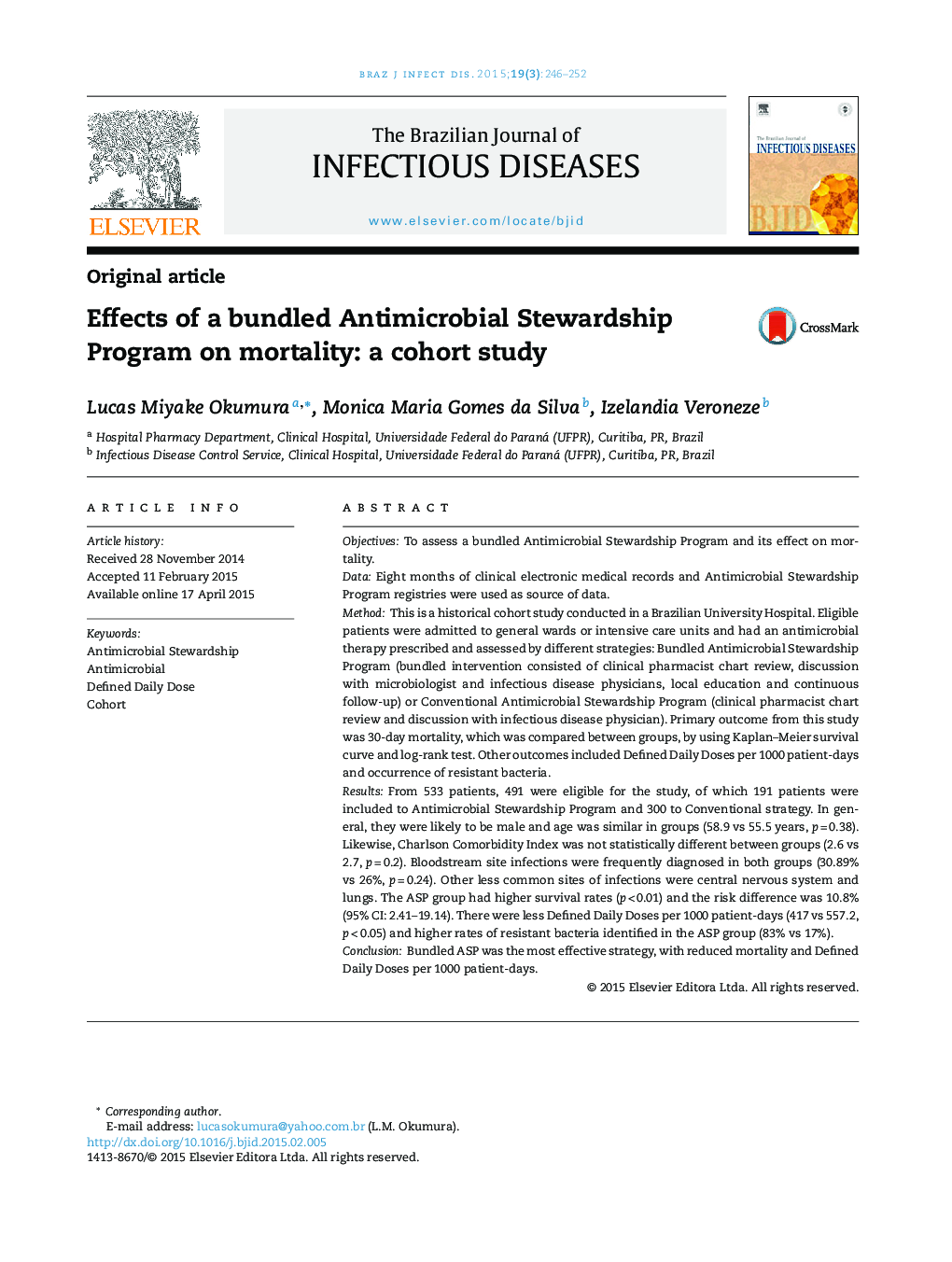| کد مقاله | کد نشریه | سال انتشار | مقاله انگلیسی | نسخه تمام متن |
|---|---|---|---|---|
| 3343778 | 1591189 | 2015 | 7 صفحه PDF | دانلود رایگان |
ObjectivesTo assess a bundled Antimicrobial Stewardship Program and its effect on mortality.DataEight months of clinical electronic medical records and Antimicrobial Stewardship Program registries were used as source of data.MethodThis is a historical cohort study conducted in a Brazilian University Hospital. Eligible patients were admitted to general wards or intensive care units and had an antimicrobial therapy prescribed and assessed by different strategies: Bundled Antimicrobial Stewardship Program (bundled intervention consisted of clinical pharmacist chart review, discussion with microbiologist and infectious disease physicians, local education and continuous follow-up) or Conventional Antimicrobial Stewardship Program (clinical pharmacist chart review and discussion with infectious disease physician). Primary outcome from this study was 30-day mortality, which was compared between groups, by using Kaplan–Meier survival curve and log-rank test. Other outcomes included Defined Daily Doses per 1000 patient-days and occurrence of resistant bacteria.ResultsFrom 533 patients, 491 were eligible for the study, of which 191 patients were included to Antimicrobial Stewardship Program and 300 to Conventional strategy. In general, they were likely to be male and age was similar in groups (58.9 vs 55.5 years, p = 0.38). Likewise, Charlson Comorbidity Index was not statistically different between groups (2.6 vs 2.7, p = 0.2). Bloodstream site infections were frequently diagnosed in both groups (30.89% vs 26%, p = 0.24). Other less common sites of infections were central nervous system and lungs. The ASP group had higher survival rates (p < 0.01) and the risk difference was 10.8% (95% CI: 2.41–19.14). There were less Defined Daily Doses per 1000 patient-days (417 vs 557.2, p < 0.05) and higher rates of resistant bacteria identified in the ASP group (83% vs 17%).ConclusionBundled ASP was the most effective strategy, with reduced mortality and Defined Daily Doses per 1000 patient-days.
Journal: The Brazilian Journal of Infectious Diseases - Volume 19, Issue 3, May–June 2015, Pages 246–252
